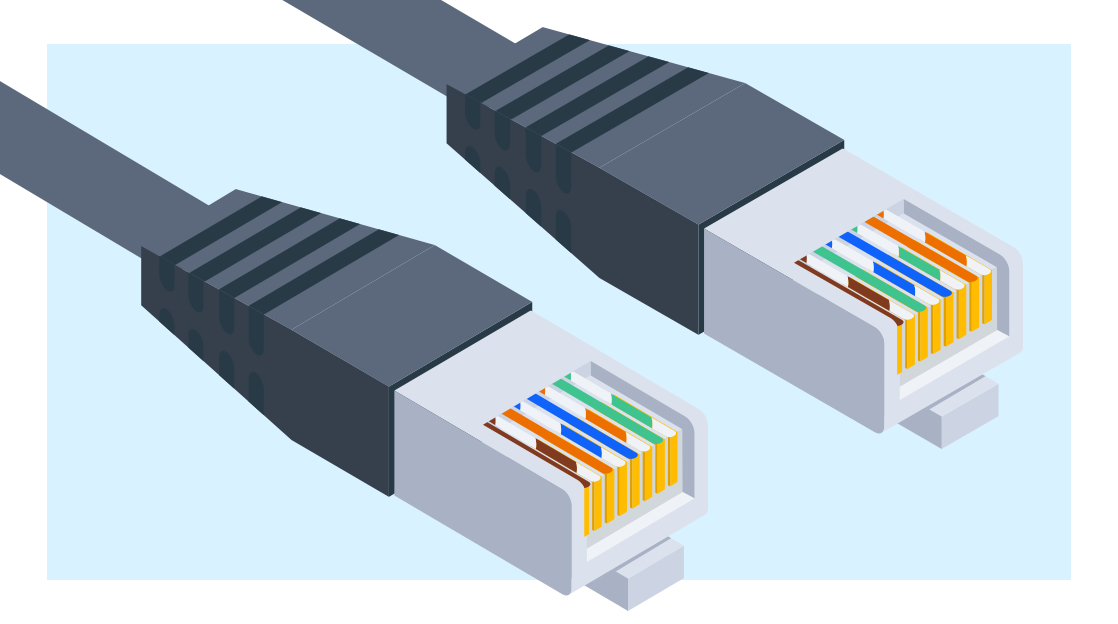T568A vs T568B

Quick Definition: The main difference between T568A and T568B is the arrangement of the orange and green wires. T568B is the preferred format for new networks in the United States, while T568A is used for older phone systems. T568A is required by the US government on any federal contracts to maintain network consistency. To keep your network working well, stick to one standard.
Consistency is key for ethernet cables. Mixing different wiring standards may seem minor, but it can lead to significant connectivity problems across your LAN. To understand their similarities and differences, let’s investigate the two prevailing wiring standards, T568A and T568B.
These wiring standards are essential topics on network certification exams, such as Network+, as well as real-world networking scenarios. Let's delve into the primary distinctions between T568A and T568B wiring configurations and how their specific applications influence our interconnected world.
What is a Wiring Standard?
An ethernet wiring standard is a set of specs and guidelines for how ethernet cables should be wired and terminated. It establishes the order of the eight wires within the cable. Following a wiring standard is essential for reliable communication between networked devices across your LAN.
Who Decides the Wiring Standards?
Wiring standards are established by the Telecommunications Industry Association (TIA) and the Electronic Industries Alliance (EIA). The Institute of Electrical and Electronics Engineers (IEEE) also contributed to the standards.
These organizations establish and maintain standards for many telecom and electronics industry aspects with input from member companies, government entities, service providers, and academic institutions.
What is T568A?
T568A is the first of two ethernet wiring standards. The standard defines the order of the eight individual wires within the cable. It is an older standard and is often found in existing network cable installations.
T568A Wire Arrangement and Color Coding
Ethernet cabling’s four pairs of wires always come in four colors: green, blue, orange, and brown. One of each pair will be a solid color; the other is striped with the color and white. The colors are used to describe the order of the wires when terminated.
The T568A wiring standard dictates that the wires are arranged in the following order, starting with the pin 1 on the RJ45 jack: green/white, green, orange/white, blue, blue/white, orange, brown/white, brown.
What is T568A Compatible With?
T568A can be used with any networking equipment. It is backward-compatible with legacy phone systems that use RJ-11 plugs. The standards are not compatible with each other, but a crossover cable can be used between two jacks or patch panels wired to different standards.
What is T568B?
T568B is the second, more modern ethernet wiring standard. Like T568A, the standard defines the order of the wires in the cable, but T568B is a different order than T568A. T568B is preferred (but not required) in most new ethernet installations.
T568B Wire Arrangement and Color Coding
T568B uses the same ethernet wiring as T568A with the same green, blue, orange, and brown solid color and white-striped wires. T568B switches the orange and green wires from the order used for T568A. The order starting from pin 1 is orange/white, orange, green/white, blue, blue/white, green, brown/white, brown.
What is T568B Compatible With?
Like T568A, T568B can be used with any networking equipment. However, the two standards are not compatible with each other without a crossover cable. The key is consistency of one standard or the other across the LAN.
T568A vs T568B
Assuming all other wiring best practices are followed, both standards can provide rock-solid connections across your network. Both are also similarly easy to implement as long as you remember the order (or keep a reference handy). While they are very similar, there are key differences between the two standards physically and in what circumstances you might choose one or the other.
What is the Difference Between T568A and T568B?
The key difference between the two wiring standards is the wires' order, specifically the orange and green wires. This difference came about as the two standards were established by different groups at different times, and neither was fully adopted as the only “correct” standard.
All ethernet devices, however, will work the same as they are agnostic with regard to which standard is used.
Benefits of T568A and T568B
T586A does have a few benefits over T568B. As mentioned, T586A is compatible with legacy phone systems; this is T568B’s only real downside. T568A is also usually required for US government facilities to maintain consistency across all physical networks. However, T568B is preferred by some as a more recent standard. The key, again, is to be consistent to maintain good connectivity across your network.
What Happens if You Mix T568A and T568B?
Mixing T568A and T568B will result in connectivity issues. A network jack has eight pins. Cabling connecting two separate devices must match each pin in each jack to properly establish a connection. Mismatched wiring doesn’t allow for all eight pins to connect correctly, and the devices won’t be able to communicate.
Choosing Between T568A and T568B
Choosing one standard over the other is inconsequential, apart from supporting legacy phone systems or working in a US government facility. Given no other requirements, T568B is commonly preferred as it is a more modern standard. The established standard should always be continued if you add additional ethernet wiring to an existing LAN.
Conclusion
These wiring standards may seem like a minor detail, but maintaining consistency with one or the other is vital for your network. Knowing if a specific standard is required for logistical reasons or to match existing wiring is essential to maintain reliable communication.
Precision and consistency matter, so choosing and sticking to one standard will save you many potential headaches.
delivered to your inbox.
By submitting this form you agree to receive marketing emails from CBT Nuggets and that you have read, understood and are able to consent to our privacy policy.
